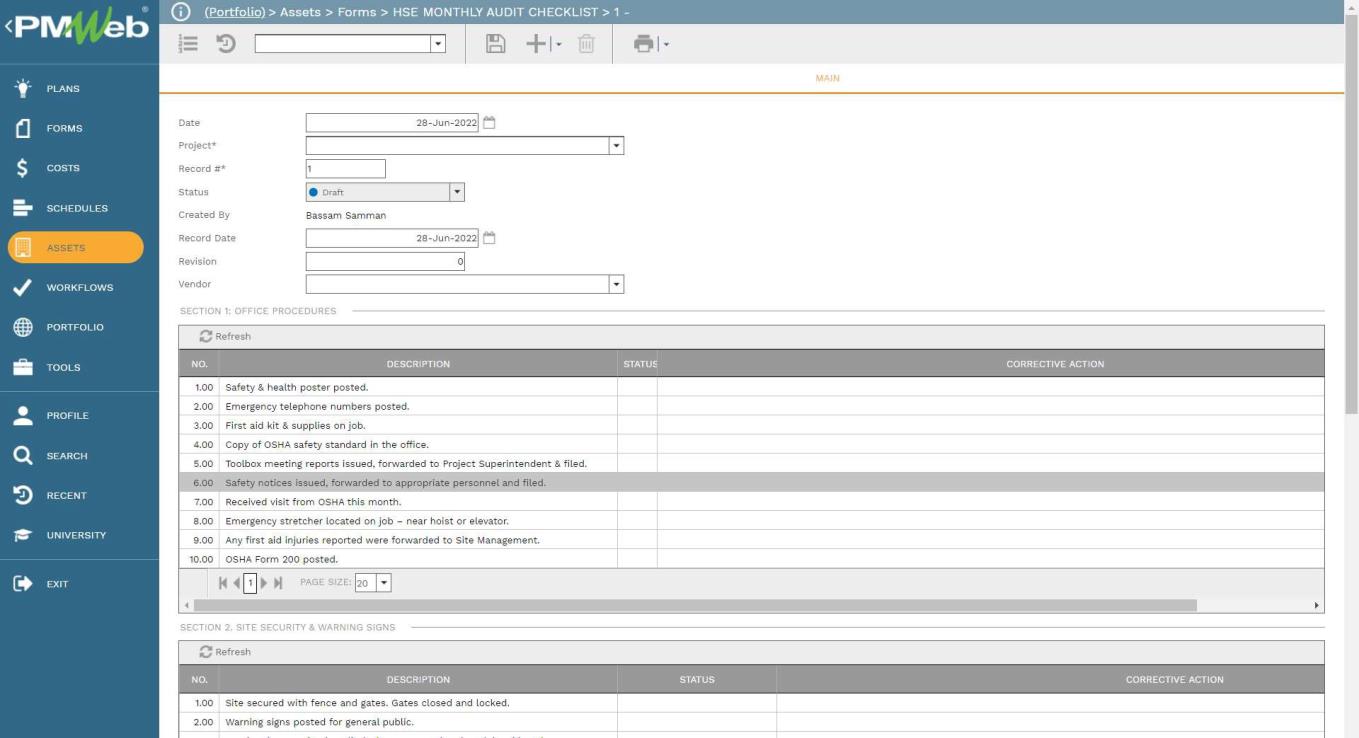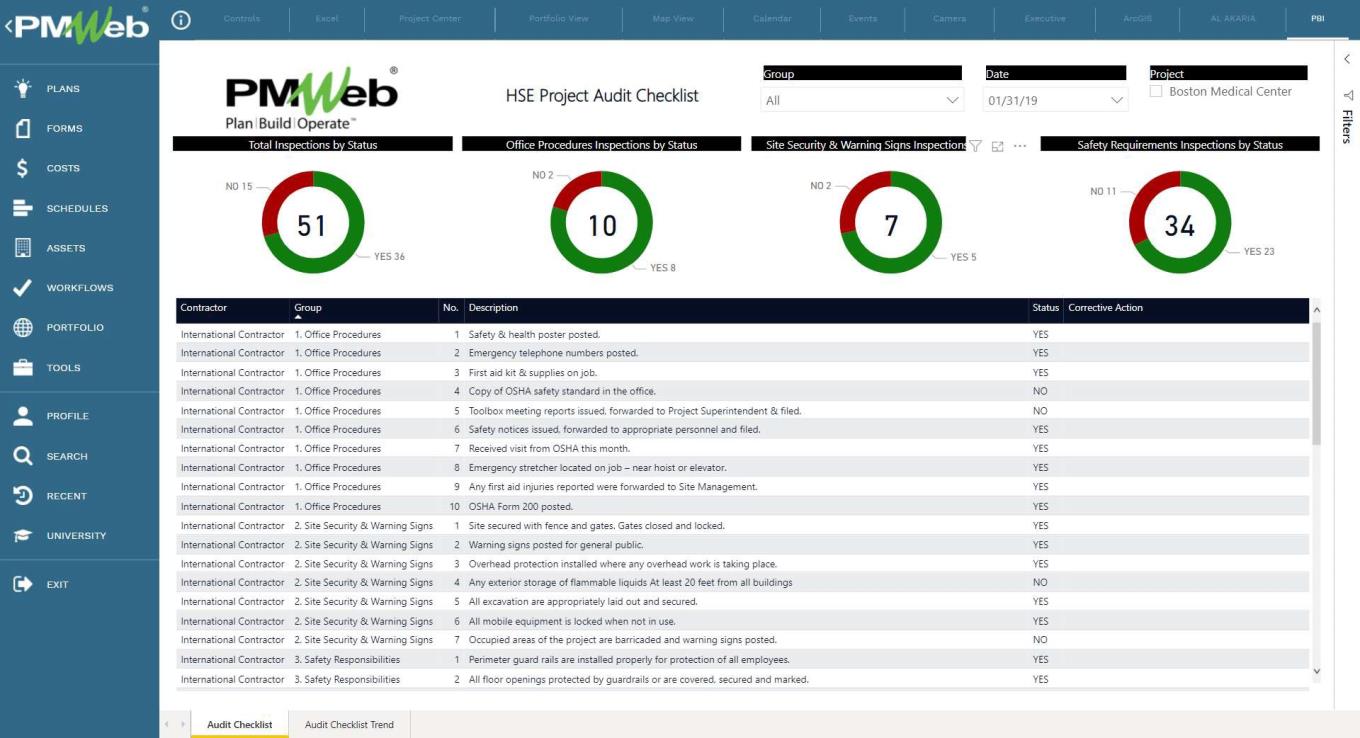Another health, safety, security, and environment (HSSE) process of the project control system (PCS) that is usually managed by the project owner and needs to be reported on is the outcome of the periodical HSSE audit. On construction projects, the project owner’s authorized representation and the contractor conduct a joint HSSE monthly audit to verify the implementation of the selected HSSE risk controls. The monthly joint audit intends to ensure compliance with safety practices observed on-site against the criteria contained in the checklist. Corrective actions are required to be implemented to rectify all reported non-compliances.
Some of the reasons to conduct HSSE monthly audits include to determine if safety and health programs and procedures are working, to verify that field employees and management are engaged in the safety programs, to verify that project HSSE processes comply with company policies and regulations, to verify compliance with applicable OSHA or any other adopted HSSE rules, to determine if you are documenting your safety and health program activities properly, to discover and identify potential hazards, to evaluate the effectiveness of existing management controls, to check the safety of the project workplace, to check the safety of project equipment, to evaluate the adequacy of contractor’s supervisors’ safety training and performance, and to evaluate the adequacy of field employees’ safety training and performance.
Using PMWeb form builder, the HSSE monthly audit checklist gets created. The checklist template includes tables for the different sections of the checklist. For example, it can include tables for Office Procedures, Site Security and Warning Signs, and Safety Responsibilities. Each table includes a list of items to be audited and audit status which could be “Yes”, “No” or “Not Applicable”. For those with the status “No”, corrective action is required to implement to rectify the reported non-compliance.
The attachment tab allows uploading, storing, and attaching pictures and documents that were relevant to the HSE audit. Accessing PMWeb using a smart mobile device, allows the audit team to take pictures and record videos that can be attached to the checklist.
A workflow gets assigned to the HSSE audit checklist where it becomes formally sent to the contractor to implement all corrective actions required to rectify the reported non-compliance. When the contractor completes those corrective actions, the contractor submits the HSSE audit checklist to the project owner’s authorized representative to review and approval.

The HSSE Audit Checklist report details the audit status for each period. The report includes a table that details all inspections carried out for each group along with their status. For those that are not compliant, the corrective action field details the taken action. The report also includes a visual to summarize the completed inspections for all groups and additional three visuals one for each group.

Reference
The content of this article was extracted from the book titled “Let’s Transform: Enabling Digital Transformation of Capital Construction Projects Using the PMWeb Project Management Information System – 2nd Edition” written by Bassam Samman.
The book provides project owners with oversight on how technology available today can support their efforts to digitally transform the management of their projects’ portfolios. For each capital project life cycle stage, PMWeb is used to detail how the relevant project management business processes can be digitalized to enforce transparency and accountability in delivering projects. In addition, MS Power BI was used to show how the real-time, trustworthy data captured in PMWeb can be aggregated, modeled, monitored, evaluated, analyzed, and reported at any time, anywhere using any device.



